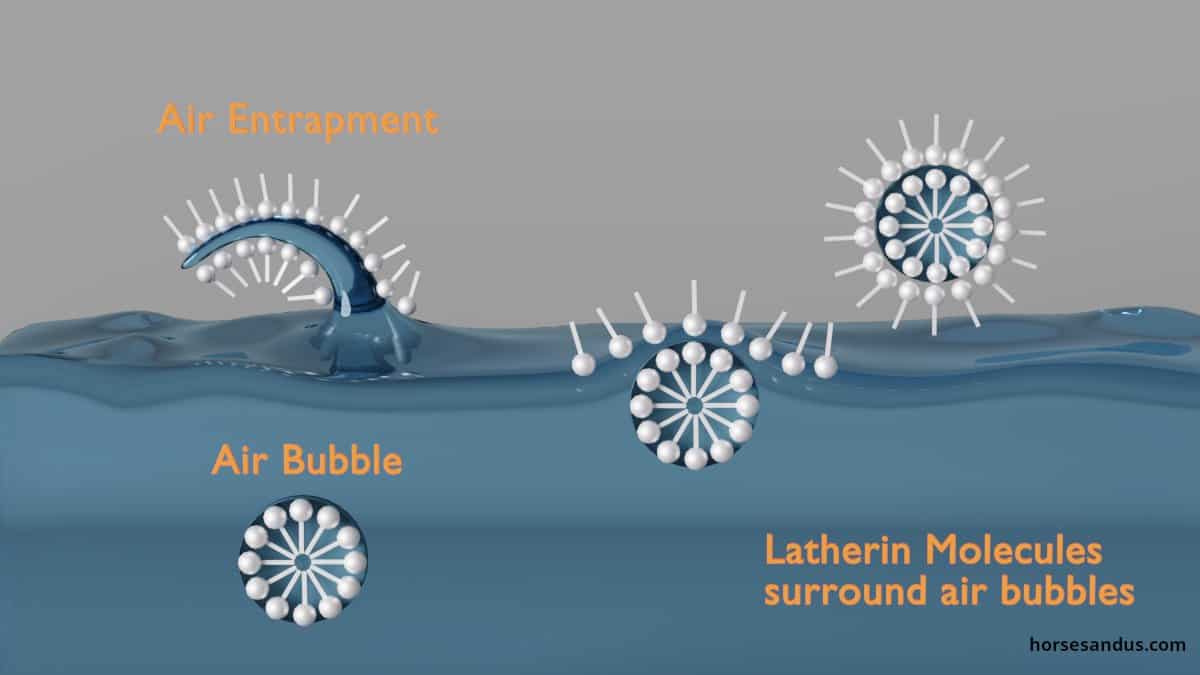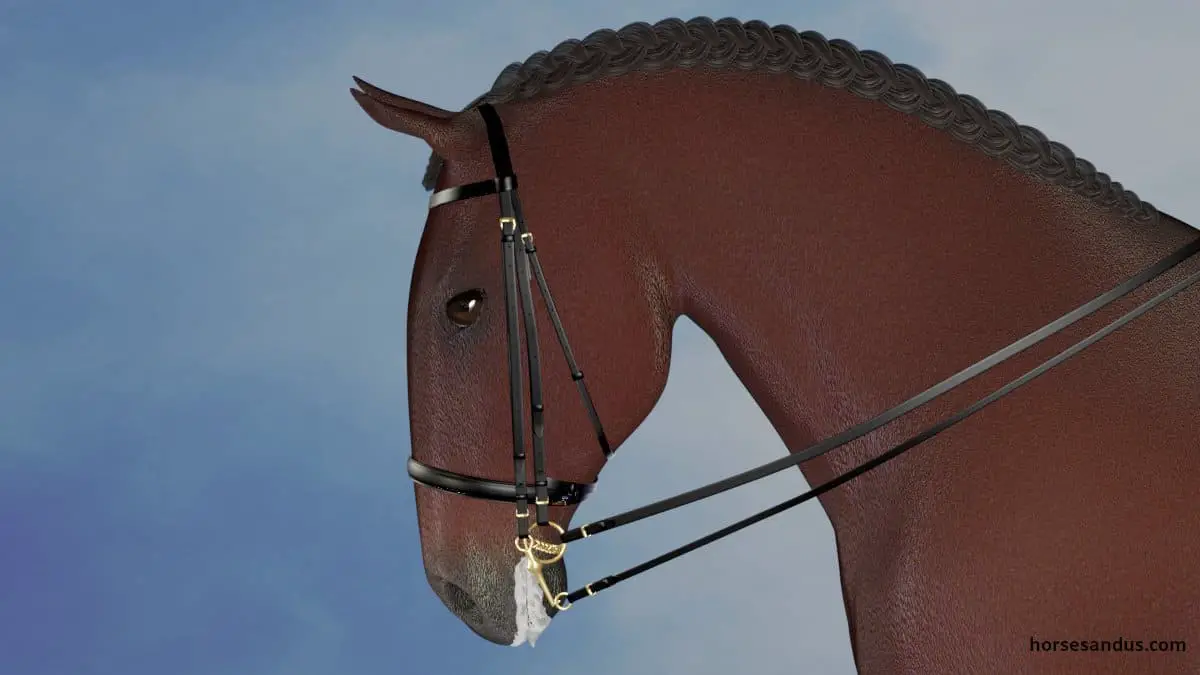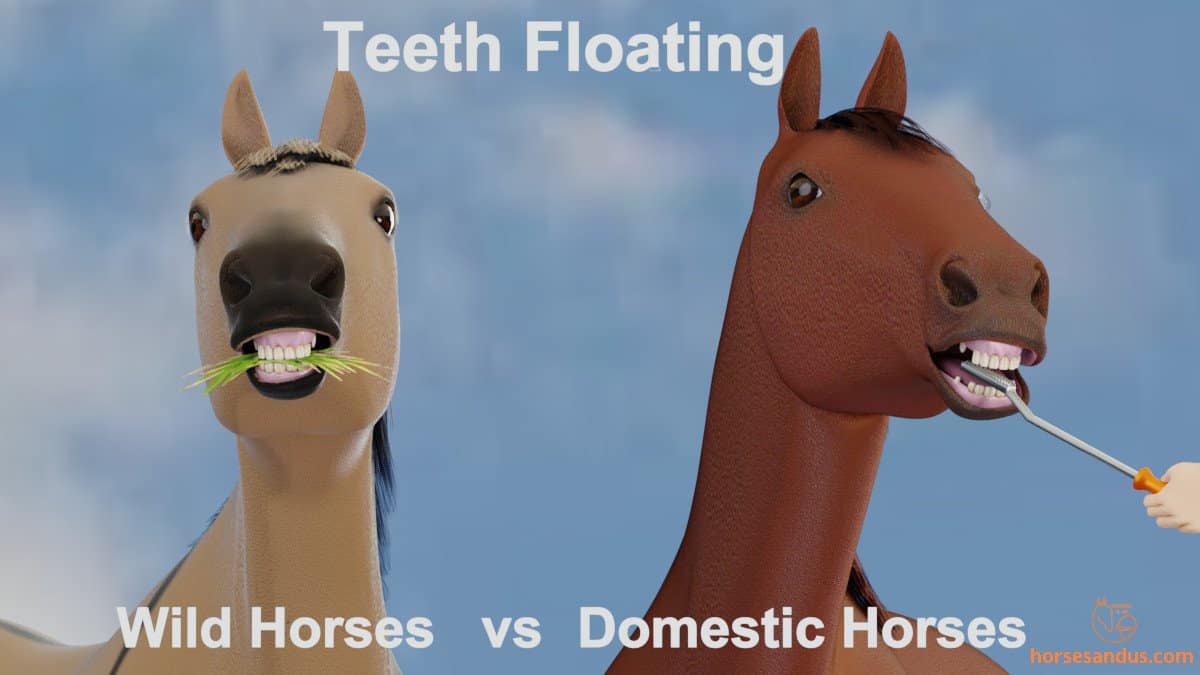It is common to see foam on a horse’s body while he is exercising, especially on a hot summer day. In this article, we will explain why this foam appears.
Horses foam when sweating because of latherin, a soap-like substance. Latherin helps the sweat spread over the surface of the coat so that evaporation can occur for heat loss. Just like soap, latherin produces foam when friction occurs: Tack rubbing against the coat or body parts rubbing together, such as inner thighs.

In this article, we will explain why sweat produces foam, the risks of sweating too much or too little, and why you need to clean the horse’s coat after sweating.
How is Foam Produced in the Sweat?
Just like us, horses also sweat to regulate their body temperature. However, they have a thick waterproof coat that would normally not allow the rapid movement of sweat from the skin to the hair’s surface that is necessary for evaporative cooling.
So to resolve this, they have a protein with high concentrations in their sweat, called latherin. This protein is unique to equids.
Latherin Increases The Spreading Of Sweat
The function of latherin is to increase the spreading and wetting properties of the sweat.
This helps the movement of sweat from the skin to the surface of the hair. Once on the surface and in contact with air, the water in the sweat can evaporate, carrying the heat away from the body to reduce its temperature.
We, as humans, don´t need this protein in our sweat because we do not have a thick layer of waterproof hair on our skin.
Horses are large flight animals and so require efficient heat dissipation when running from predators for a sustained period. Therefore they may have evolved to adapt latherin as a way to quickly and efficiently dissipate heat.
Latherin is like Soap
Latherin is a surfactant like soap. If we compare latherin to soap, you can understand why it is a spreading agent by watching this video.
But what about the foam ?
Well, latherin behaves in the same way as soap does.
Water with soap will become foamy when you rub your hands together to wash them. In the same way, sweat will become foamy when it is rubbed:
- tack rubbing against the coat (like, for example, the reins on the neck)
- body parts rubbing together (like, for example, buttocks)
foam is a side effect of latherin when rubbing occurs
The rubbing will agitate the sweat and create air bubbles inside it. Then the latherin stabilizes these air bubbles.

Molecules of latherin surround the air bubbles and allow them to exist in the sweat for some time without bursting. The mass of these air bubbles is what makes up the foam we can see when the horse is sweating.
It is believed that latherin originally existed in the saliva, which explains why horses foam at the mouth, and later it was adapted to facilitate the thermoregulation action of sweat.
Foam can be an indicator of how much sweat was lost
Some German researchers found that the pattern of sweat on the horse’s body indicates how much sweat was lost.
| Pattern of sweat | Amount of lost sweat |
|---|---|
| – The area under the saddle and throat are wet – Small foam areas at the corners of the saddle | 1 to 1.3 gallons / 4 to 5 liters |
| – The flank, and areas under the saddle and girth are wet – Foam on the bridle and noseband | 1.8 to 2.3 gallons / 7 to 9 liters |
| – Throat and flanks are wet, and areas above eyes are moist with dark wrinkles – Foam between the limbs | 2 to 3 gallons / 9 to 12 liters |
| – If sweat is dripping above the eyes and under the belly | 3 to 4.7 gallons / 12 to 18 liters |
Latherin may cause Human allergies to horses
Researchers have tested the immune response of people who are allergic to horses and observed that their antibodies would bind to latherin, suggesting that it is an allergy trigger.
Several horse allergens have been identified: Equ c 1, Equ c 2,Equ c 3 and Equ c 4
The allergen Equ c 4, present in dander and saliva of horses, is a latherin protein. It is considered the second major horse allergen, but more studies are needed to determine its importance.
Further research on the characteristics of latherin may provide information that can help with the treatment of allergies.
If you would like to read about this subject you can go here and here.
Why you need to clean the sweat from the horse’s coat
To keep the skin and hair in good condition, all sweat must be removed from the horse whenever possible because the accumulation of sweat can damage the hair:
- Excessive sweating can occur where the heat is trapped under the mane. If the sweat is not removed, it will remain there for a long time and be absorbed by the skin’s epidermis layer, reaching the hair follicles. The moisture will cause the hair follicle to soften, and the hair will eventually fall off.
- The accumulation of dried sweat and dirt can irritate the horse’s skin and cause hair loss. This is commonly observed on the horse’s face and ears because of their aversion to being washed in these areas.
When cleaning the sweat, special attention needs to be given to areas under the mane and tail and also where rubbing occurred, like the area where the reins rubbed, under the saddle, the girth, and the inner thighs.

If possible, you should rinse the horse, which is the best way to remove the sweat and, at the same time, helps to cool the body, which is useful in the summer.

If you cannot rinse the horse, then the sweat should be allowed to dry, and after you should thoroughly curry and brush the horse’s coat to remove all the dried sweat.

Grooming tools to remove sweat
The links below that lead to products on Amazon are affiliate links and I earn a commission (with no additional cost for you) if you make a purchase.
My suggestion of grooming tools that efficiently remove the sweat are:
Rubber curry brush to loosen dirt and sweat that is stuck to the horse’s coat
Wahl Professional Animal Equine Grooming Rubber Curry Horse Brush, Black (858712)Equine stiff body brush to remove dirt and sweat that has been previously loosened by the curry comb
Wahl Professional Animal Equine Grooming Stiff Body Horse Brush, Black (858705)Face brush to gently remove dirt and dry sweat from the face.
Wahl Professional Animal Equine Grooming Face Horse Brush (858707), BlackMane and tail brush for detangling the hair that is clumped together with sweat and dirt.
Wahl Professional Animal Equine Grooming Mane and Tail Horse Brush, Black (858709)Replenishing the electrolytes lost when sweating
Horses’ sweat has a high concentration of electrolytes, which are minerals such as potassium, magnesium, sodium, chloride, bicarbonate, and phosphate.
Electrolytes play a crucial role in many biological processes, such as muscle function and a regular heartbeat. They also protect the horse from dehydration by delivering water to the cells and also support nutrient absorption.
If a horse loses electrolytes through sweating and if they are not quickly replenished, then health issues can happen, such as dehydration, diarrhea, muscle dysfunction, cramping, and irregular heartbeat.
So it is very important to replenish the lost electrolytes.
In most cases a the horses diet is enough
When the horse sweats, the electrolytes are lost and so they must be replenished. Luckily most of the food that horses eat contains these minerals, however, sodium and chloride may need to be supplemented with a salt block. So food and a salt block will be enough to restore the lost minerals.
When an electrolyte supplement is needed
But if the horse sweats large quantities for long periods, without the possibility to replenish these vital minerals, they will become depleted, and the physiological processes that they control may be disrupted.
In these cases, the horse should be given an electrolyte supplement to replenish the lost minerals quickly.
What if the horse does not sweat ?
Sweating is essential for a horse to cool his body when it is overheated.
If a horse cannot sweat, he is in danger because he has no way to dissipate the heat that builds up in his body. The heat can reach high levels, putting him at risk of heatstroke.
This condition is called anhidrosis and requires special management and veterinarian intervention.
How to detect anhidrosis
You can detect this condition if you notice that the horse:
- does not sweat or sweats very little after heavy work
- breathes faster and more heavily than would be expected
- is reluctant to work and gets exhausted more easily
If you notice these signs, then you should call your veterinarian to diagnose the horse. He may perform a “sweat test” to confirm if the horse has anhidrosis.
Avoid Overheating a Horse with Anhidrosis
If anhidrosis is confirmed, then you need to take care to minimize the conditions that could overheat the horse:
- exercise him at a time in the day when the temperature is lower
- shower him after exercising, to help him release the heat
- keep him in a cool environment
Summary
- A horse will foam because of latherin, which is a protein existing in his sweat. The foam will only appear when there is friction.
- Latherin may be a cause of human allergies to horses.
- Besides proteins, such as latherin, the horse’s sweat also has electrolytes, which are minerals such as potassium, magnesium, sodium, chloride, bicarbonate, and phosphate.
- If a horse sweats excessively, he will lose electrolytes, which are vital to some physiological processes and so these may be compromised if the electrolytes are not replenished.
- If a horse does not sweat, he cannot dissipate his heat and is at risk for heatstroke if you do not help him to cool his body.
- The sweat should be removed from the horse’s body because it can irritate the skin and cause hair loss.


